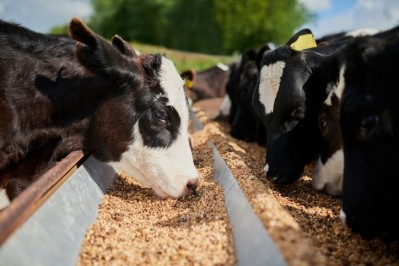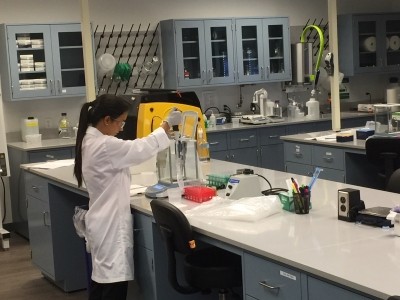Phytase superdosing increases zinc bioavailability, says producer

Phytase superdosing typically involves the addition of sufficient phytase to quickly destroy all phytate present in the diet at inclusion levels of 1,500 FTU per kg of feed or greater of an enhanced E.coli phytase.
Dr Carrie Walk, AB Vista’s senior research manager, told us: “Customers had approached us about looking into lowering the supplemented levels of zinc in piglet diets to reduce the environmental impact.”
She said that, in terms of the company’s superdosing and zinc release research, the team had seen that the high inclusion levels of phytase increased zinc serum.
A higher amount of zinc (Zn) serum, said AB Vista’s EMEA swine technical manager, Gustavo Cordero, indicates an improvement of Zn utilization by the animal and may, in part, explain the growth performance benefit as well as the reduction in post-wean scour by 6% in pigs fed superdose phytase supplemented starter feeds.
The lower level of scour may also be a component of the overall improved nutrient utilization of such a diet, thereby limiting nutrient flow into the hind gut and reduced microbial proliferation, he noted.
Zinc usage in EU pig diets
Zinc usage is limited in EU pig feeds to a total of 150 mg/kg, including background Zn levels although often pharmacological levels - 2000-2500 ppm Zn - are used up to 21 days post-weaning to help prevent diarrhea as well as improve growth performance.
Cordero said the use of in-feed pharmacological levels of Zn as zinc oxide (ZnO) for two weeks post-weaning followed by 100 ppm Zn supplementation, is widely accepted in the pig industry; the approach was taken up in some EU countries after the antibiotic growth promoter ban.
But there is increasing pressure to reduce zinc oxide (ZnO) in European pig production. Concerns related to ZnO usage are its potential for environmental contamination, its accumulation in soil and its potential run off into water.
Cordero said using a phytase that reduces phytate concentration and therefore increases the bioavailability of Zn should appeal to the European pig sector, as AB Vista’s research shows it allows for a reduction in dietary ZnO supplementation, whilst reducing fecal scours and maintaining piglet growth.
Trial data
He cited a series of five piglet feeding trials undertaken in different countries, which looked at the effects of using a phytase, dosed at 2500 FTU/kg immediately post-weaning up to 21 days.
Three levels of ZnO (low, medium and high) were used to investigate the impact of phytase and Zn on piglet performance. The results showed, he said, the importance of Zn supplementation with the high Zn, non-phytase supplemented diet improving gain by 12-17% when compared to the low zinc supplemented pigs.
He said the addition of superdosing phytase improved performance at all levels of Zn tested by 10-30% with the highest ADG at 30% obtained at medium levels of Zn with superdoses.
Manufacturer led research
A November 2015 published review by Steve Dritz et al concluded that the relative effect of superdosing phytase if the concentrations of digestible phosphorus, amino acids and other nutrients are marginal in the diet: “The effect will also depend on the concentration of phytase that is already in the diet. One caution is that most superdosing studies have been performed or sponsored by the phytase manufacturers. Little peer reviewed published data has been generated by independent third party entities to evaluate the impact of superdosing different phytase sources in commercial diets.”
In reaction to that comment, Walk said: “AB Vista initiated the practice of superdosing so that is the reason why a lot of the research comes from us or is commissioned by us. It was our idea originally.”








